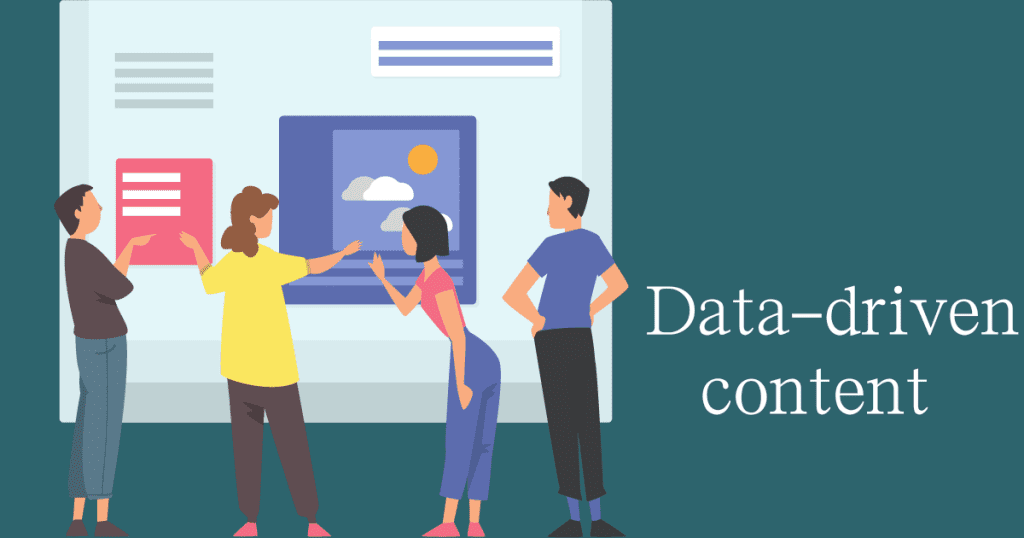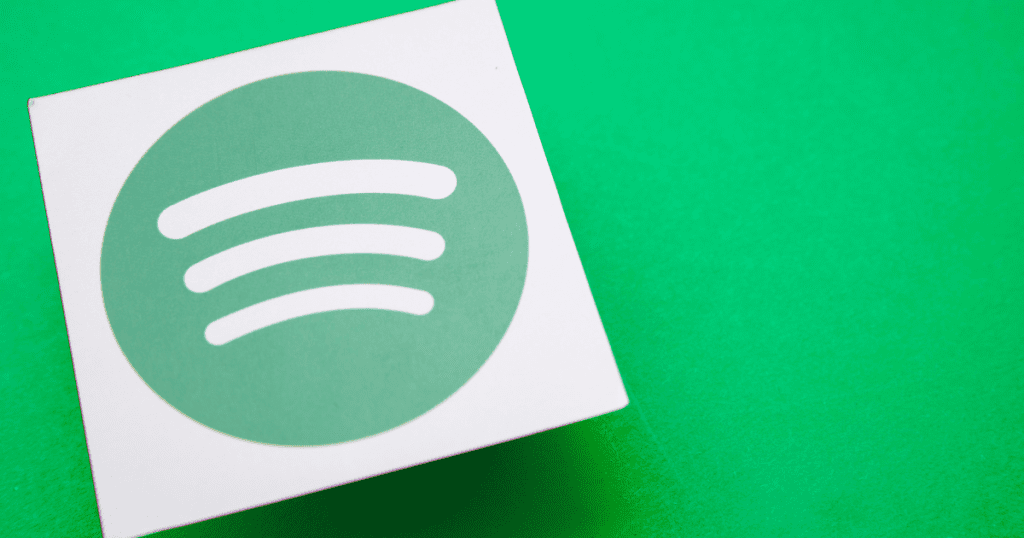Spotify uses data as marketing content to personalize recommendations and target specific user segments. By leveraging user preferences, listening habits, and demographic information, spotify creates tailored playlists, personalized recommendations, and targeted advertisements to engage users and drive conversion.
In an increasingly competitive streaming market, spotify’s data-driven approach allows them to deliver a personalized and highly relevant user experience, ultimately leading to increased engagement and customer loyalty.

Understanding Spotify’S Data-Driven Marketing Strategies
Spotify’s marketing strategies revolve around data, with a focus on personalized campaigns and targeted advertising. The importance of data in their approach cannot be overstated. By utilizing user listening data, spotify tailors content that aligns with individual preferences. This enables them to deliver a personalized experience to each user, increasing engagement and loyalty.
Additionally, spotify relies on user-generated data to inform targeted advertising efforts. Analyzing user behavior, interests, and preferences allows spotify to curate ads that are highly relevant to its audience. By leveraging the power of data, spotify is able to create a marketing strategy that encompasses both personalization and targeted advertising, resulting in an effective and engaging user experience.
Spotify’S Data-Driven Partnerships And Collaborations
Spotify leverages its vast data to fuel marketing content through strategic partnerships and collaborations. Working closely with brands and artists, spotify creates customized playlists that resonate with their target audience. Additionally, they partner with influencers and podcasters to promote their content and reach a wider audience.
By using data insights, spotify optimizes its brand partnerships and sponsorships, ensuring that they align with the interests and preferences of their users. This approach helps spotify to create compelling and engaging content that not only promotes their platform but also caters to the unique tastes and preferences of their diverse user base.
Through data-driven marketing, spotify continues to solidify its position as a leading player in the streaming industry, captivating listeners and driving user engagement.
Enhancing User Experience Through Data-Driven Content

Spotify utilizes the power of data to enhance user experience through personalized content. Spotify utilizes the power of data to enhance user experience through personalized content. Through the classification of data, Spotify refines its recommendations to match user preferences more accurately. By curating recommendations based on individual listening habits, spotify ensures engaging and relevant music suggestions. These data-driven insights improve music discovery and user engagement on the platform.
With a constant focus on analyzing user data, spotify continuously strives to provide a seamless and enjoyable experience for its listeners. By harnessing the power of data, spotify creates a unique and tailored music journey for every user, allowing them to discover new artists and genres that align with their preferences.
Through their data-driven approach, spotify has revolutionized the music streaming industry, providing users with a personalized and immersive experience like never before.
Read Also How to Optimize Shopify Images for SEO
Frequently Asked Questions On How Spotify Uses Data As Marketing Content
What Data Strategy Does Spotify Use?
Spotify uses a data strategy that focuses on personalization and user insights to enhance the music streaming experience. By analyzing user behavior and preferences, spotify collects data to curate personalized playlists and recommendations. This data-driven approach helps spotify understand users’ music tastes, habits, and engagement patterns.
Additionally, spotify leverages data to optimize its algorithms and improve content discovery. The platform uses machine learning techniques to continuously learn from user interactions and refine its recommendations. This data strategy allows spotify to provide a tailored and engaging user experience, helping users discover new music and enjoy a personalized music library.
How Does Spotify Use Social Media Analytics?

Spotify utilizes social media analytics to gain insights and improve its strategies. The data from social media platforms helps spotify understand user preferences, interests, and behaviors. The company uses this information to refine its recommendation algorithms and personalize user experiences.
By analyzing social media trends and discussions, spotify can also identify popular artists, genres, and songs, which helps in curating playlists and discovering new music. Social media analytics also provide valuable feedback on marketing campaigns, allowing Spotify to gauge the effectiveness of their advertisements and promotional activities.
This data-driven approach aids in targeting specific audiences and enhancing user engagement. By leveraging social media analytics, Spotify stays ahead of competitors and continually improves its platform for users worldwide.
Is Spotify Wrapped Content Marketing?
Yes, Spotify wrapped is a form of content marketing. It is a yearly campaign by Spotify that generates personalized end-of-year summaries for each user. These summaries include top songs, artists, and genres listened to throughout the year, as well as various statistics and insights.
Spotify then encourages users to share their wrapped summaries on social media platforms, creating a buzz and promoting the brand. This content marketing approach not only engages existing users but also attracts potential new users by showcasing the personalized and data-driven features of the platform.
Spotify wrapped effectively combines data analytics with user-generated content to create a compelling marketing campaign that resonates with its audience.
Why Is Big Data Important For Spotify?
Big data is crucial for Spotify due to several reasons. First, it helps Spotify gain insights into user behavior and preferences, which allows them to personalize the user experience. This enables Spotify to deliver tailored recommendations and curated playlists to each user, enhancing customer satisfaction.
Second, big data aids in discovering trends and patterns in music consumption, enabling Spotify to identify popular genres, artists, and songs. This information helps them make informed decisions regarding music licensing, artist collaborations, and new feature development. Third, big data assists Spotify in analyzing user engagement and identifying churn predictors.
By understanding user behavior patterns, Spotify can proactively intervene with personalized recommendations and incentives to prevent user attrition. Overall, big data empowers Spotify to optimize its services, provide a better user experience, and remain competitive in the crowded music streaming industry.
Conclusion
In this blog post, we explored how Spotify effectively harnesses data as marketing content. By constantly analyzing and utilizing user data, Spotify is able to personalize the listening experience for its users, increasing engagement and satisfaction. Not only does Spotify utilize data for personalization, but they also leverages it to create targeted advertising campaigns, allowing brands to reach their desired audiences effectively.
Furthermore, Spotify’s data-driven approach enables them to identify trends and insights in the music industry, fueling their efforts to promote emerging artists and create popular curated playlists. This data-centric approach not only sets Spotify apart from its competitors but also underscores the power of data in shaping effective marketing strategies.
As technology continues to advance, it is clear that data-driven marketing will play an increasingly significant role in driving success for businesses across industries. Spotify’s success serves as a testament to the importance of harnessing data as marketing content in the modern digital landscape.




